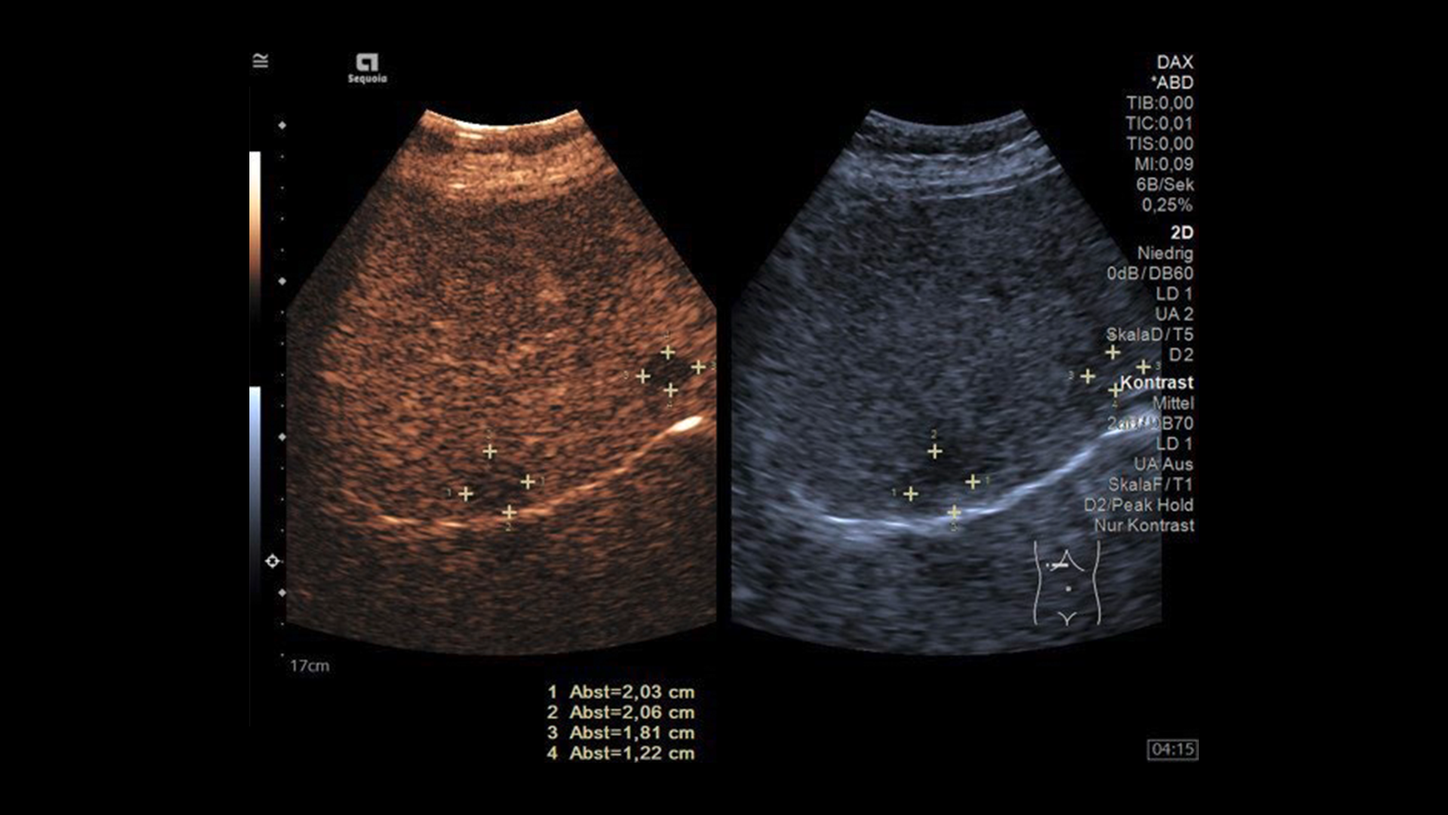- Home
- Medical Imaging
- Ultrasound Machines
- Advanced Ultrasound Applications
- Personalized Ultrasound Solutions
Personalized Ultrasound SolutionsBecause every patient's care should be as unique as their fingerprint
Personalized Liver Ultrasound
With chronic liver disease on the rise worldwide, the diagnosis of liver disease, including cancer, is critical, as further complications can arise. Key factors in helping to ease this global burden are early diagnosis, treatment, and continued patient monitoring. Personalized Liver Ultrasound solutions leverage a patient-centric approach to chronic liver disease with advanced, easy-to-use technologies such as contrast-enhanced ultrasound, fusion imaging, and Virtual Touch elastography.
Virtual Touch Elastography

pSWE
Increased confidence in measurement accuracy is provided with a complete liver assessment report that includes the Interquartile Range (IQR) / Median Ratio, the recommended quality control measure for adequate technical quality.

2D SWE
In 2D SWE, high sampling density provides high spatial and stiffness resolution for imaging focal lesions and heterogenous tissue. Measurements can then be performed at precise locations to measure tissue stiffness in m/s or kPa.

Quality Map
The quality map allows immediate assessment of shear wave quality and improves diagnostic confidence.

Displacement Map
The displacement map provides further clinical information of tissue displacement from high to low.
Performing shear wave elastography exam
DAX for challenging patients by Dr. Richard G. Barr
DAX (Deep Abdominal Transducer)
The DAX transducer was designed to go to deep, imaging down to 40cm with elastography, CEUS and Fusion capabilities. Ergonomically designed, DAX also decreases the push force by 70% reducing potential injuries1, making DAX an ideal transducer for technically difficult patients with limited imaging windows.
Contrast-enhanced Ultrasound (CEUS)
The powerful architecture of the ACUSON Sequoia system allows visualization of contrast deeper and with greater clarity than ever before.
Contrast Pulse Sequencing (CPS) & Contrast Harmonic Imaging (CHI)
CPS provides high motion flash suppression and excellent tissue suppression. With high specificity and sensitivity, CPS allows you to image at greater depths for those difficult to penetrate contrast exams.
CHI is an excellent tool for superficial imaging while still providing superb depth penetration when it counts.
Taking CEUS to new depths
Hear Dr. Anders Nilsson from Skåne University Hospital Lund, explain how new advances in technology improved CEUS performance allowing for easier departmental adoption.
Fusion Imaging
Fusion imaging combines multi-modality imaging for improved confidence in complex interventional procedures.

Fusion
Fusion imaging combines multi-modality imaging for improved confidence in complex interventional procedures.
Etrax™
Etrax needle navigation provides needle tip tracking to improve confidence in targeting difficult-to-access lesions.
Clinical Images
Education & Training
Point Shear Wave Elastography (pSWE)
Each patient presents with their own unique set of signs and symptoms. The gold standard for diagnosing and monitoring the progression of liver fibrosis is liver biopsy. Yet, there are known limitations of a liver biopsy that make it less than ideal for ongoing assessment of disease progression. Studies have shown an increase in stiffness due to liver disease, as measured with point shear wave elastography (pSWE), to be rapid, reliable, and reproducible. This course focuses on changes to liver stiffness due to chronic liver damage.
Learn about changes in shear wave velocity and elasticity with advancing liver disease.
Papers & Studies
Improve Diagnostic Confidence in Liver Health
Liver assessment using gray scale ultrasound findings alone can be difficult. Remove subjectivity to improve diagnostic confidence by displaying quantitative tissue stiffness properties using Virtual Touch technology.
The degree of tissue stiffness has been shown to correlate with the progression of liver fibrosis.

The DAX transducer provided visualization of an additional lesion at a much deeper level – a level that conventional contrast imaging struggles to see.
Use of CEUS for the characterization of focal liver lesions
Contrast-enhanced ultrasound (CEUS) uniquely balances the sophisticated interaction between the contrast agent and the ultrasound wave. This technology harmonizes the vascularization and timing of liver perfusion, and leverages the expertise of the clinician and sophistication of the technology.

Multiple metastatic lesions were demonstrated throughout the liver with the DAX – some well below 14 cm in depth.
Contrast-enhanced ultrasound (CEUS) and Obesity
The DAX transducer allows users to perform advanced applications such as contrast-enhanced ultrasound (CEUS), allowing contrast visualization to greater depths than conventional transducer technologies.
Did this information help you?
Thank you.
1. Data on file